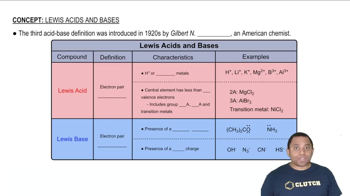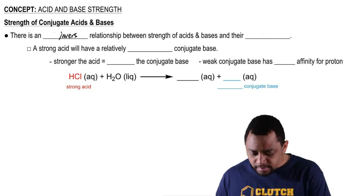Here are the essential concepts you must grasp in order to answer the question correctly.
Acid-Base Neutralization
Acid-base neutralization is a chemical reaction where an acid reacts with a base to produce water and a salt. This process typically results in a solution that is closer to neutral pH, which is 7. However, the final pH depends on the strength of the acid and base involved, as well as their concentrations.
Recommended video:
Strength of Acids and Bases
Acids and bases can be classified as strong or weak based on their ability to dissociate in water. Strong acids, like HClO4, completely dissociate into ions, while weak bases, like NH3, only partially dissociate. The strength of the acid and base determines the resulting pH after neutralization, influencing whether the solution will be acidic, neutral, or basic.
Recommended video:
Strength of Conjugate Acids and Bases
pH Scale
The pH scale measures the acidity or basicity of a solution, ranging from 0 to 14. A pH of 7 is considered neutral, below 7 is acidic, and above 7 is basic. Understanding the pH scale is crucial for predicting the outcome of acid-base reactions, as it helps determine whether the resulting solution will be acidic, neutral, or basic after neutralization.
Recommended video:




